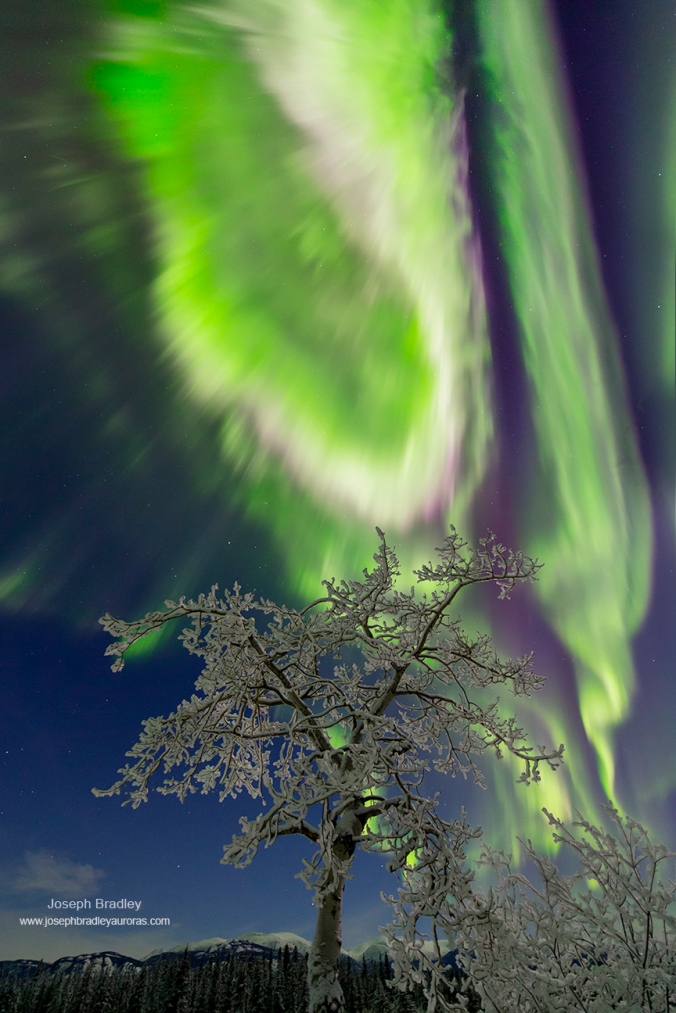Jan. 16, 2019: Yes, there are explosions in Earth’s magnetic field. They happen all the time. Gusts of solar wind press against Earth’s magnetosphere, squeezing lines of magnetic force together. The lines criss-cross and reconnect, literally exploding and propelling high energy particles toward Earth. Auroras are the afterglow of this process.
On Dec. 20, 2015, one such explosion occurred closer to Earth than anyone had seen before. It has taken researchers 4 years to fully wrap their minds around what happened, and the results were published just this week in the Jan. 13, 2020, edition of Nature Physics.

Auroras in the aftermath of a near-Earth magnetic explosion on Dec. 20, 2015. Credit: Joseph Bradley of Whitehorse, Yukon, Canada
Lead author Vassilis Angelopoulos of UCLA explains: “Usually, these explosions happen at least 100,000 miles from Earth, far downstream in our planet’s magnetic tail. On Dec. 20, 2015, however, we observed a reconnection event only 30,000 miles away–more than 3 times closer than normal.”
It was a case of good luck and perfect timing. NASA’s swarm of three THEMIS spacecraft were passing through the area, and they were able to pinpoint the explosion’s location “right on the doorstep” of the geosynchronous satellite belt. This showed reconnection events may pose a previously overlooked threat to Earth-orbiting satellites. The nearby blast caused a strong G2-class geomagnetic storm and intense auroras around the Arctic Circle.

In this diagram of Earth’s magnetosphere, “X” marks the spot of the Dec. 20, 2015, explosion. The 3 THEMIS spacecraft are also shown. Credit: Emmanuel Masongsong, UCLA EPSS
Angelopoulos estimated the energy involved. “The explosion and subsequent storm delivered as much as ~88 PetaJoules of energy to the near-Earth environment. That’s more than 10 times the energy of the largest US nuclear bomb and about 20 times the energy of a magnitude 7 earthquake.”
Before this event, many researchers felt that reconnection at such proximity was impossible. Earth’s nearby magnetic field was too stable for such explosions … or so the thinking went.
“Now we know better,” Angelopoulos says. “The THEMIS multipoint observations are iron-clad. It really happened, and this is going to make a big impact on future studies of geomagnetic storms.”
The original research in Nature Physics may be found here.